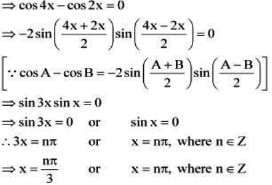HSSC TGT Math Mock Test - 10 - HSSC PGT/TGT MCQ
30 Questions MCQ Test HSSC TGT Mock Test Series 2024 - HSSC TGT Math Mock Test - 10
The faintest detectable noise by a healthy human ear is of :
What is the purpose of using turn signals while driving?
On a square handkerchief, nine circular designs each of radius 7cmare made. The area of the remaining portion of the handkerchief is
How many rotations of a wheel with a 21 m radius are required to cover a distance of 6.60 km?
The distance of the point (2, 1, -1) from the plane x - 2y + 4z = 9 is
Identify the domain and range of the function f(x), defined in N, as below:
The coordinates of the point which is equidistant from the three vertices of the ΔAOB as shown in the figure is

The distance of a point (2, 3) from the y – axis is.
Let for any matrix M ,M−1exist. Which of the following is not true.
The diameter of a wheel is 1.26 m. The distance travelled in 500 revolutions is
Two coins are tossed together. The probability of getting head on both the coins is











 t ∈ R represents
t ∈ R represents















